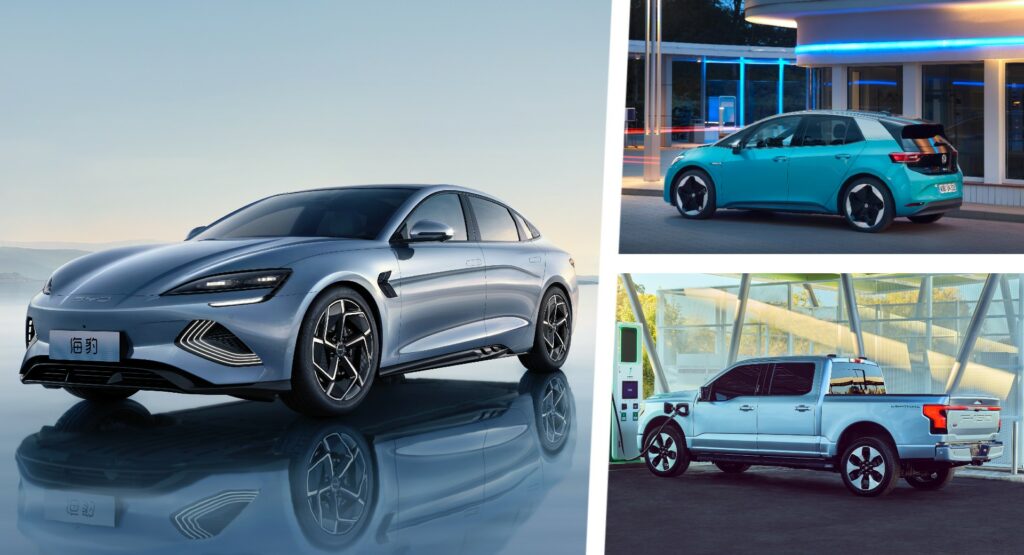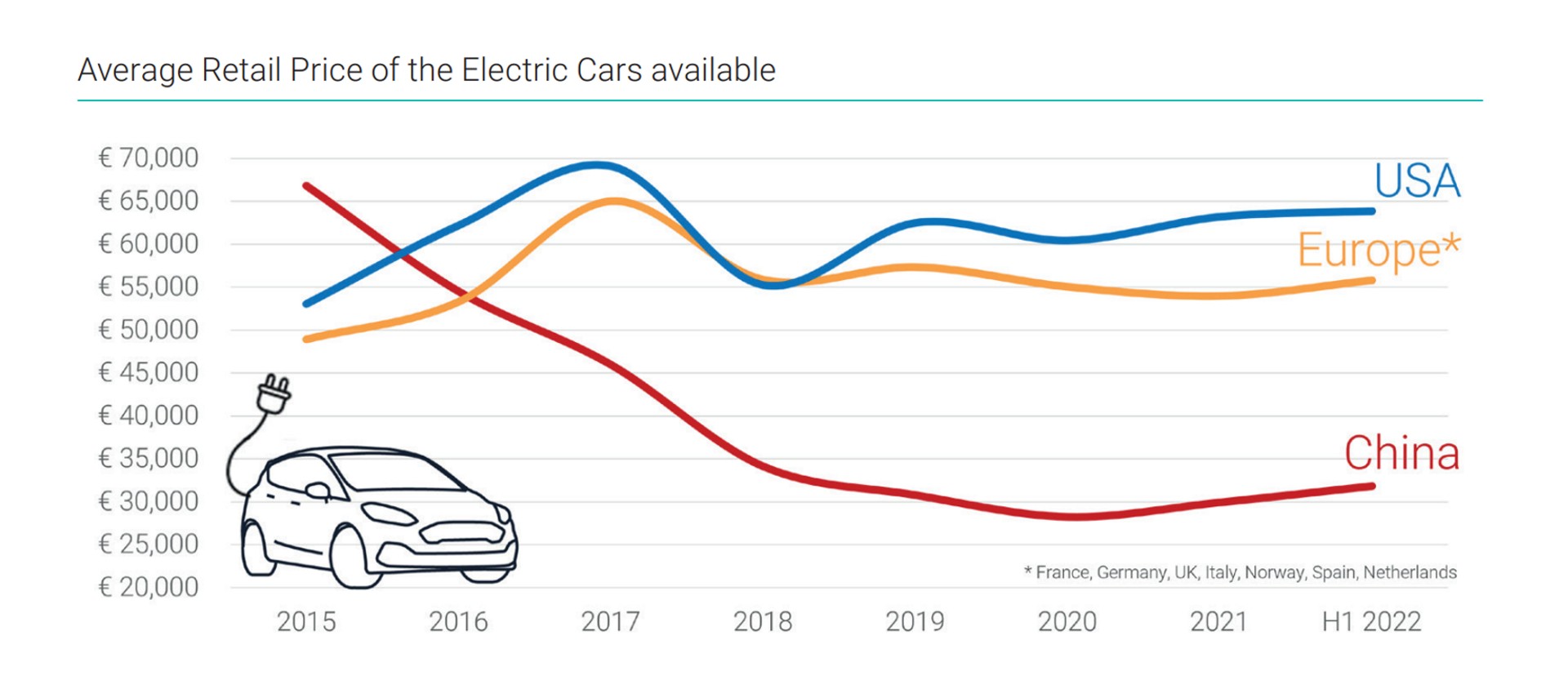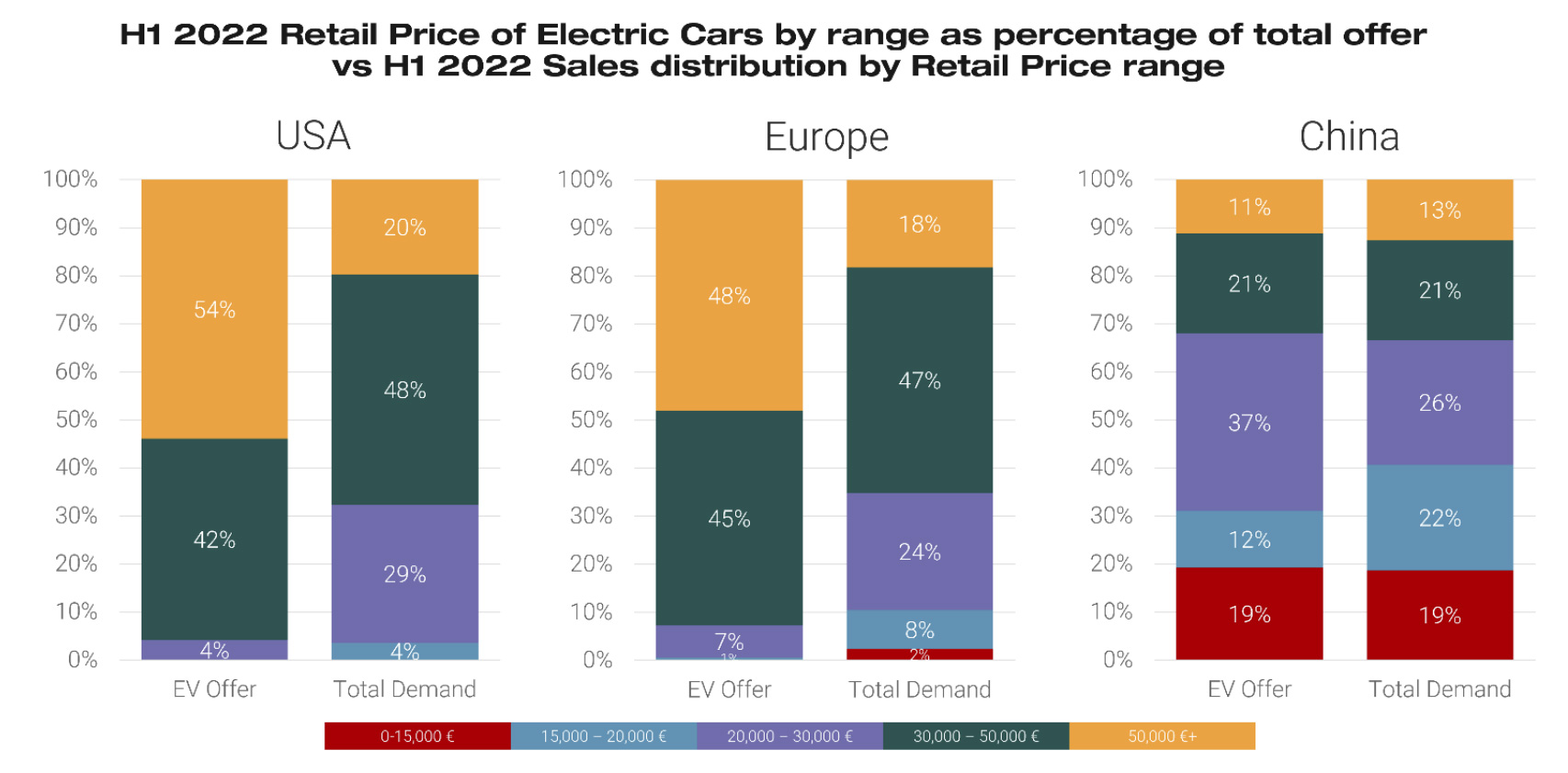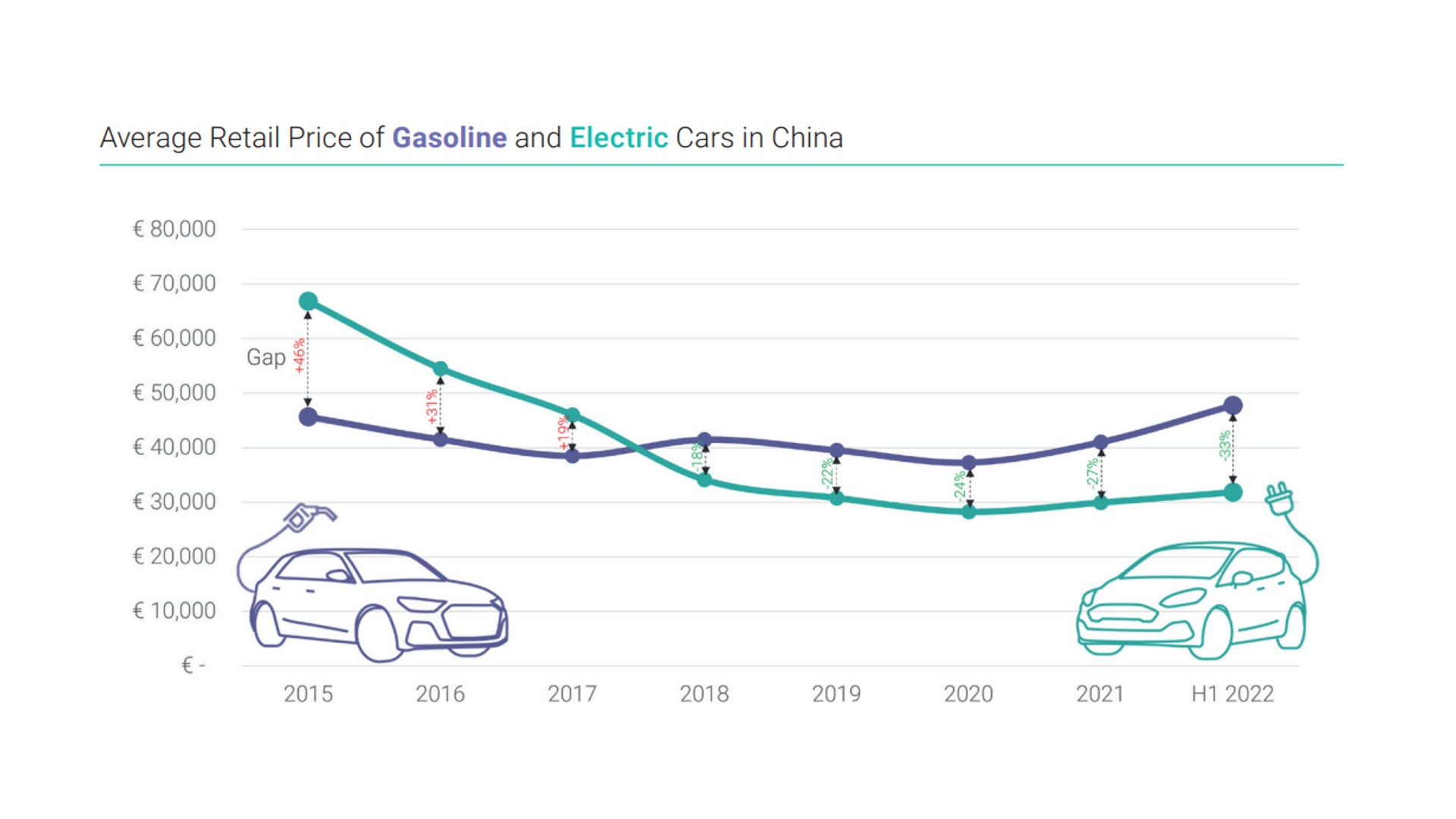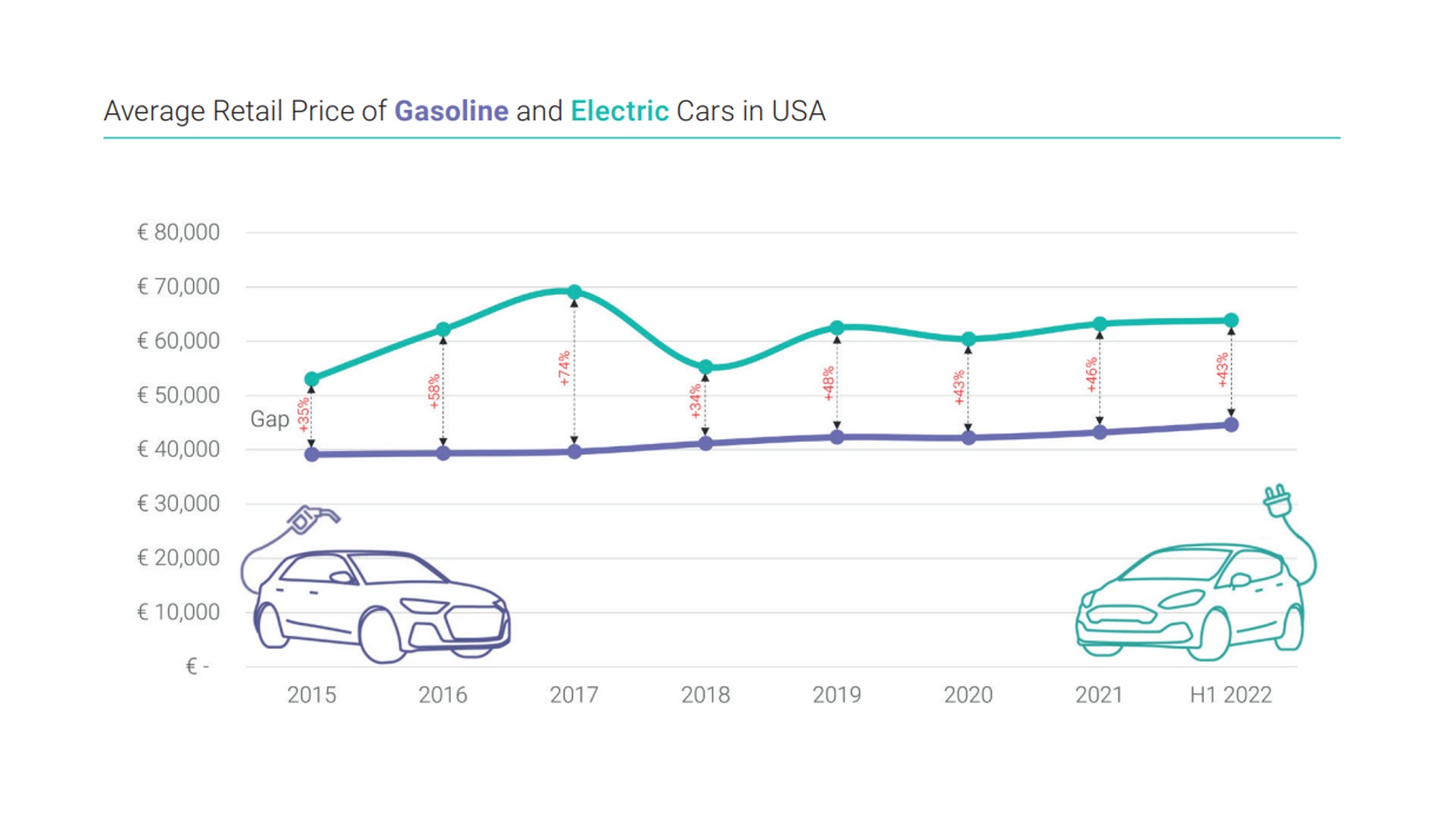The world is racing toward electrification but EV prices do not fall accordingly in all segments. While the average electric SUV is a lot cheaper compared to six years ago, prices for the average EV have gone up, especially in the smaller segments. Also, the US and European markets are still lagging behind China in terms of EV affordability, with prices remaining significantly higher than ICE-powered equivalents.
According to JATO, the average EV price between 2015 and 2022 has risen from €48,942 ($48,757) to €55,821 ($55,610) in Europe, and from €53,038 ($52,837) to €63,864 ($63,622) in the US, while dropping from €66,819 ($66,551) to €31,829 ($31,702) in China. We used the current exchange rate to convert prices from euro to US dollar in order to highlight the difference.
A more worrying issue is that EVs remain a lot more expensive compared to gasoline cars – by 27% in Europe and by 43% in the US. The balance is quite the opposite in China, where EVs are already cheaper than ICE-powered vehicles by an impressive 33%.
China easily beats both Europe and the US when it comes to EV pricing in the smaller segments thanks to generous government policies. The average urban EV price dropped from €29,918 ($29,798) to €10,131 ($10,090) between 2015 and 2022, making them accessible to a wider audience. In Europe on the other hand, urban EV prices rose by 15% to €28,319 ($28,205) in the same period, being a lot more expensive than gasoline-powered city cars which retail for €17,527 ($17,455).
Thankfully, things are slightly different in the most popular segment, as the average price for an electric SUV has dropped significantly in both Europe and the US. More specifically, in a matter of six years, prices nearly halved from €109,506 ($109,056) to €57,461 ($57,225) in Europe, and from €99,874 ($99,464) to €54,026 ($53,804) in the US. Despite the progress though, the numbers remain higher than the average price of an ICE-powered SUV which currently is €44,373 ($44,191) in Europe and €43,514 ($43,335) in the US. In China, the average electric SUV not only costs considerably less at €35,512 ($35,366), but it’s also 5% cheaper than gasoline SUVs in the same market.
EV Incentives Make A Difference
China is well ahead in terms of electric car affordability thanks to the incentive program which helped it become the world’s largest market for EVs. While the Chinese government plans on scaling down its policies reducing the industry’s reliance on incentives, this will happen gradually so it won’t affect the market stability.
Things are quite different in the US, where only 21 out of the 72 currently available EVs are eligible for the incentives. This is because government policy requires the vehicles to be assembled in North America in order to grant a tax credit of up to $7,500, while in the near future we expect more similar restrictions related to battery components. The EV incentives currently apply to a price point of up to $55k for sedans and up to $80k for trucks/SUVs, while there are also some income-based restrictions for EV buyers.
In Europe, each country has its own policy for EV incentives, with some of them going a long way during the past year. The goal is to boost EV sales in the Old Continent in order to meet the ambitious target of only zero-emission new vehicles by 2035. Still, if governments want people to still be able to afford a new electric car in the next decade, incentives should be targeted to the smallest and most popular segments for lower-income buyers.
*Prices have been converted from euro to USD in the current rate which was 1.004 at the time of writing in November 2022 and used to be 1.12 in September 2015.








